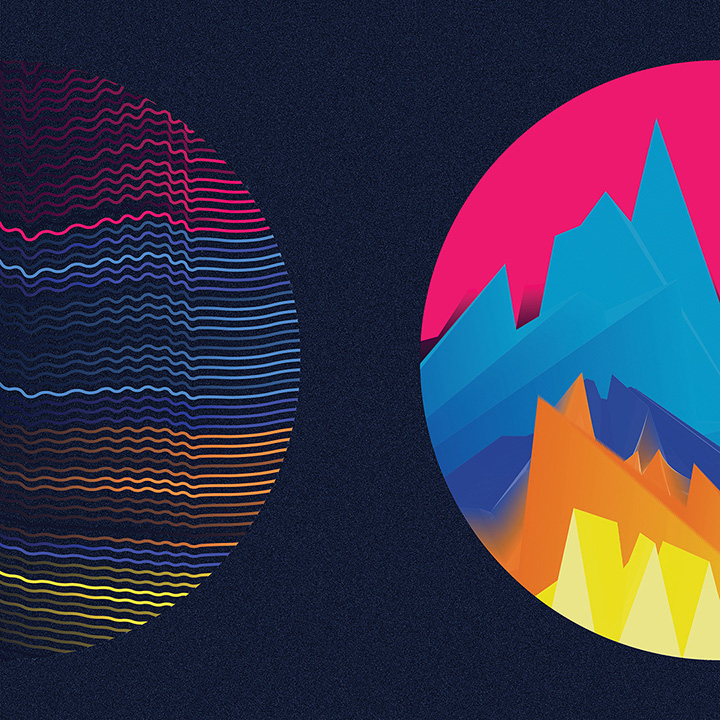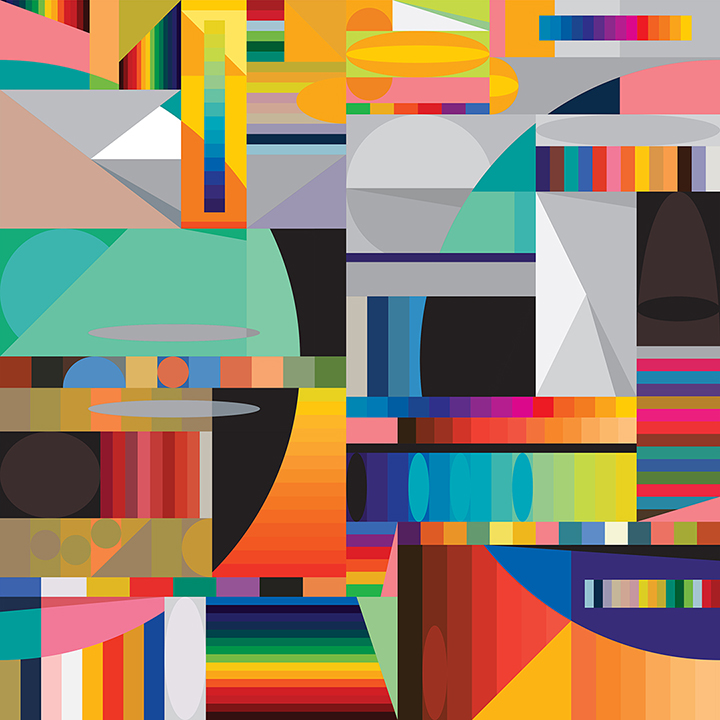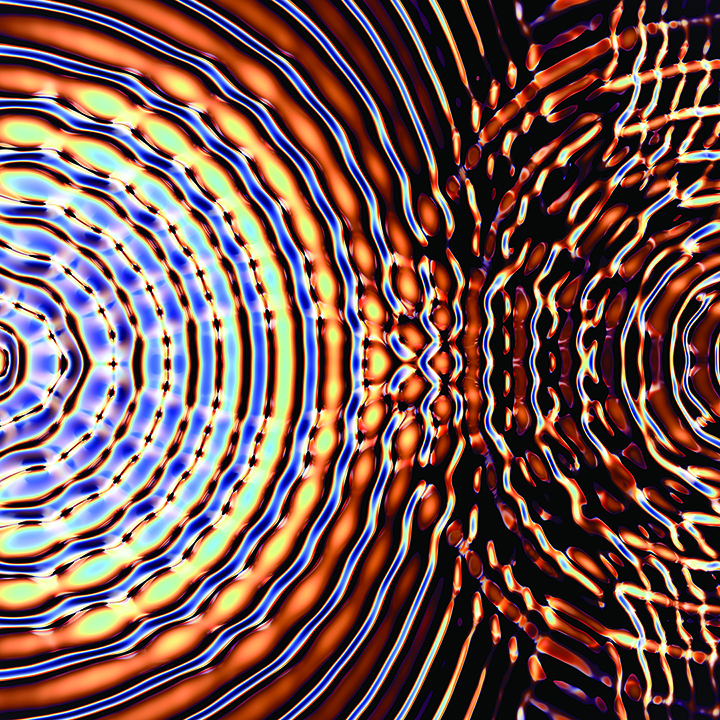As part of SF Design Week 2017, Dolby Labs is hosting Design Lives Here, a celebration of creativity at Dolby featuring the design of the Dolby Cinema, a special screening and the premiere of the Dolby Art Series.
Dolby Cinema combines the most advanced audio and imaging technologies with innovative environmental design – creating a sense of immersion. The concept is the conscious effort of Dolby’s industrial design team to develop a more holistic cinema experience and a physical representation of the integration of science and design itself.
The Dolby Art Series, is a collaboration with 22 international artists and studios from London, Thailand, Poland, Japan and the Americas that were given a simple design concept, taking cues from the iconic Double D logo to make their own statement and interpretation.
Vince Voron, Vice President and Executive Creative Director at Dolby Laboratories shares his thoughts on the Dolby Art Program and Supporting SF Design Week.

Pentagram / Eddie Opara, “Untitled”
What is the Dolby Art Program? How did you approach designing a corporate art program for a company as storied as Dolby?
Dolby has been bridging art and science since 1965. I found it was important to approach the Dolby Art Program through the lens of the company’s values. While the results may be art on the walls, the real secret is honing in on the company’s reason for being, its history and momentum as the foundation of the program.
Dolby exists at the intersection of science and art, pursuing the science of sight and sound to create exceptional sensory experiences. It was natural for a company that enables artistry through technology to engage with creators to deliver that exceptional sensory experience through their art.
When Dolby moved into our current location on Market Street, we approached the design of the space by asking “how can a space inspire the next 50 years of innovation?” One of our goals is to enable inspiration, so we wanted the artwork to create “aha” moments throughout our physical spaces. We began with art installations throughout the new headquarters in San Francisco, and then developed the Dolby Gallery in our lobby to inspire our employees, partners, and visitors. This latest series will help us scale the art program to Dolby’s office locations worldwide.

Skip Hursh, “Untitled”
How did you engage the artists and designers for the Dolby Market Street headquarters commissions? How did their ideas develop and translate into the office environment?
We set out to engage working artists at different phases in their careers, looking past existing portfolios and honing in on the potential of the work. The process began with a series of conversations about Dolby’s history and what we actually do. Many people don’t realize Dolby has a staff of neuroscientists that study how the brain uses our five senses to interpret the world. This research provides the foundation that informs various aspects of Dolby, from cinematic history, noise-reduction inventions and new technologies like Dolby Atmos to more thematic aspects like illusion and perception.
The role of Dolby’s design team was to be a resource to the artists, providing guidance and insight into new methods of production enabling efficient reproduction to our 36 global offices. One example is the work created by muralist Amos Goldbaum. He had to begin the work before there was even a wall, so we identified a solution using a very lightweight vinyl to achieve the desired results. Amos has since adopted this into his art practice.
What are some of the challenges in developing this art program?
Today, design and design thinking are inseparable from our core business practice, but this wasn’t the case twenty years ago. I see art and art experiences on a similar trajectory and believe that the relationship between art and business will evolve much in the same way as design. We are consciously looking for ways to leverage both our art and original content programs to showcase Dolby technologies.
Tell us about the Dolby Art Series. What were some of the criteria in selecting the artists and designers?
Dolby is an international company, so it was important to engage artists and studios from a wide geographic base. We looked for visual artists and designers that had developed their own personal style and approach. About half were chosen based upon existing relationships and the other half came from our partnerships with the design consultants.

onformative, “Interference”
What was the most exciting aspect of the project for you?
The most exciting aspect for me was seeing the variety of ways in which the artists and designers approached the project. We provided a lightweight wireframe inspired by the Dolby logo, but did not conduct rounds and rounds of reviews or give a lot of direction. Instead, we provided a space for creation within the framework of our iconic brand logo.
Could you share a few highlights from the series?
I’m thrilled with how the entire series came together. There’s a wide range of styles, processes, and approaches, but because each creator was responding to the same framework the pieces make a harmonious series.
The Amsterdam-based design collective Experimental Jetset created a diptych which revolved around the transformation from a material object to abstract information and then back to material object. The up-and-coming New York-based agency Gretel created a piece that incorporates elements of visual graphs used by sound designers. Working primarily in CGI, multidisciplinary artist and illustrator David McLeod contributed three visually distinct yet interconnected works that are a physical representation of synthesizer waveforms. Sara Andreasson took a more playful illustrative approach featuring the intimate whispers between people.
To find out more about the art program and the Dolby Art Series check out dolby.com/art.
If you’re in the Bay Area you can see the full Dolby Art Series in person on June 15th at Dolby Labs’ headquarters as part of SF Design Week. More info and tickets here.
The full list of participating artists is: Can Buyukberber (Istanbul, Turkey / San Francisco), Rob Lowe / Supermundane (London), Sawdust (London), Volvox Labs (Poland / Brooklyn, New York, GMUNK (San Francisco), Gretel (New York), Skip Hursh (Brooklyn, New York), Michael Paul Young (Bangkok, Thailand), onformative (Berlin), Dave McLeod (Australia / New York), Logan (Los Angeles / New York), Sara Andreasson (Gothenburg, Sweden), Territory (San Francisco), Daniel Freytag (United Kingdom), Eddie Opara / Pentagram (London / New York), Field (London), Reza Ali (San Francisco Bay Area), Young Never Sleep (Los Angeles), Experimental Jetset (Amsterdam), Motoi Shito (Tokyo), Man vs. Machine (London / Los Angeles) and Mucho (San Francisco).

